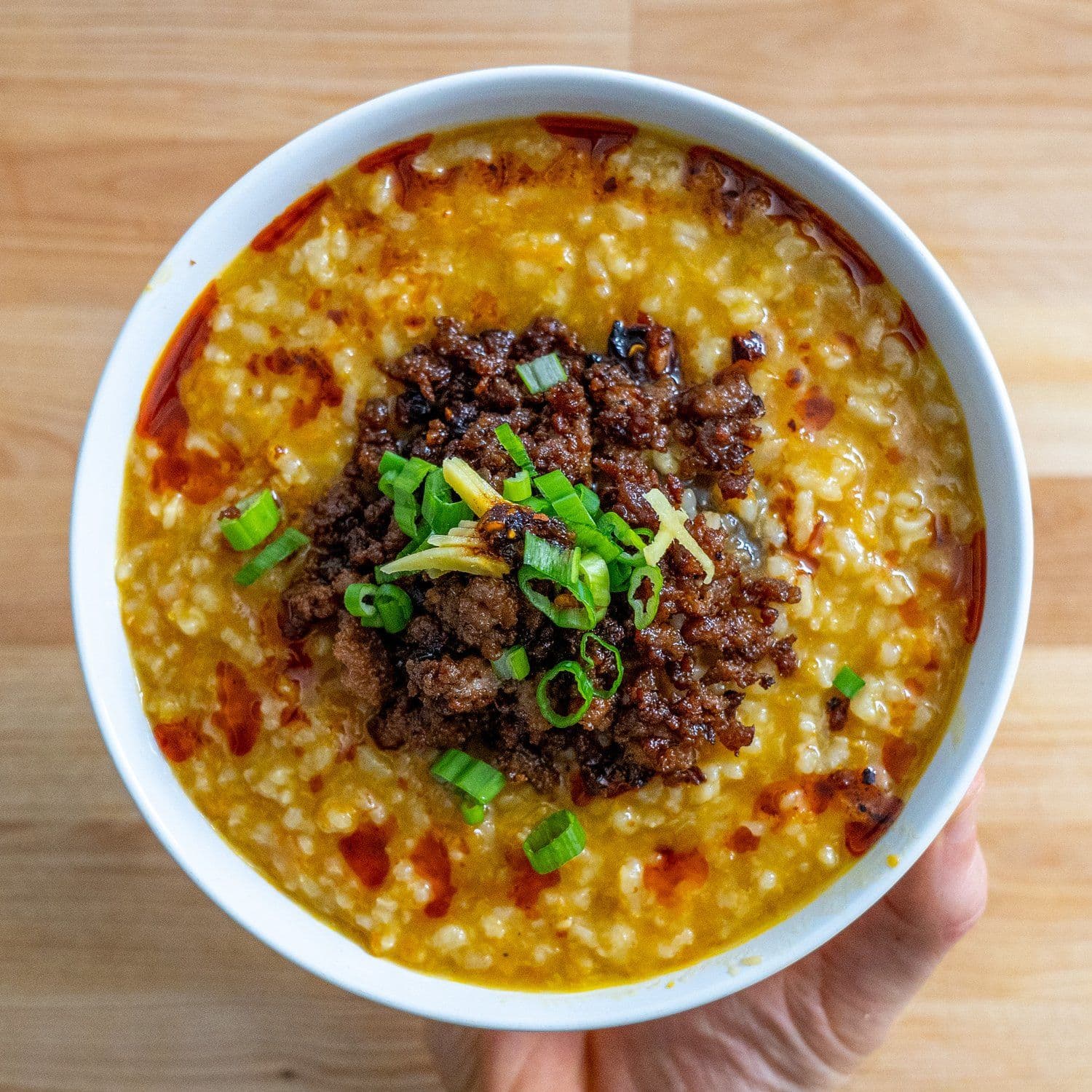Ingredients can effect the physical senses of the human body, like warm or spicy foods.

What are the fundamentals of the physical element of flavor?
This one is less intuitive but important. Eating is a physical act — and certain ingredients directly impact our physical sensations in ways that are unique from our taste or odor receptors (see & ).
- The physical elements of food that impact flavor are an ingredient’s temperature, spice, astringency, or pungency.
Why does the physical element of flavor matter?
Onions make us cry, garlic stings, and peppers burn. These aren’t tastes or aromas but actual physical reaction that happens in our mouths or bodies.
- A dish with scotch bonnet peppers doesn’t ‘taste’ spicy, it is spicy because capsaicin is causing a specific physical response.
As a side note, food can also have advantageous physical properties that are important to cooking (like how is a great thermal conductor), but on Cook Well, the word “physical” will always refer to the bodily response from an ingredient.

Temperature
Hot or cold ingredients can add a physical contrast to a dish, or the overall temperature of a dish can change our perception of its flavor. In modern times, we expect certain foods to be cold, others to be warm, and others to be tepid at room temperature.
In general, we can better taste and smell the flavors of warm or hot foods (but not scalding), while cold ingredients taste muted.
- Cold foods require more salt, acid, spices, etc to taste properly seasoned. A chilled soup should be seasoned more strongly than a warm soup, for instance.
Humans also find novelty in contrast. We prefer hot chocolate on a cold day and a crisp beer in the summer. Thus, a burrito bowl is more pleasurable with contrasting temperatures (hot meat vs. cold guac), and an affogato (hot espresso poured over ice cream) is a more exciting dessert than just a plain scoop.
Example foods
- Hot vs. cold soup
- A rice bowl with warm rice & protein contrasting with crisp, cold lettuce and herb toppings
- A toasted sub vs. a cold sub
- Freshly grilled burger patty vs. a cold, leftover patty

Pungent
is mild, physical irritation that registers as slightly spicy, bitter, or overly aromatic.
Usually, pungent reactions occur in the presence of sulfurous aromatic molecules, such as those released by alliums, wasabi, or horseradish. These molecules attach to our sensitive mouth and nose linings and cause a mild, uncomfortable sensation that can actually “wake up” our culinary senses.
- Some alliums, like onions and shallots, contain pungent molecules known as lacrimators. These irritate the linings of our eyes, which cause us to cry.
Example foods:
- Raw garlic or scallions
- Ginger
- Mustard
- Horseradish
- Wasabi

Astringent
Like pungency, is neither a taste nor a smell, but a tactile sensation caused by phenolic compounds (known as tannins) in foods such as unripe fruits or tea leaves.
Astringent ingredients create a drying or puckering sensation and trigger salivation, as often happens with lightly bitter or alcoholic ingredients.
- Interestingly, astringency is more common in darker-pigmented ingredients like red grapes and red lettuce.
Some astringency is desirable as it adds mouthfeel to a dish, which is useful for counteracting unctuous textures. A red wine dries and refreshes our palate after each bite of a fatty steak. Too much astringency, however, is overpowering and tiring to our senses.
Example foods
- Dark chocolate
- Wine
- Tea & coffee
- Persimmons

Spicy
ingredients create a physical reaction in your mouth (or hands or nose) pain receptors.
- Usually, spicy ingredients contain capsaicin, a molecule that creates temporary inflammation in our mouths and makes our skin more tender and sensitive to both flavors and temperatures.
- Other ingredients, like Sichuan peppercorns, create a numbing or tingling sensation (known as mala in some cuisines), which verge between pungent and spicy.
Why do we enjoy the painful sensations of spicy foods?
- Not only do they “wake up” our senses by increasing our sensitivity to flavors and temperatures, but they also provide novelty to the eating experience.
- If our brain feels safe, it registers the painful reactions from spicy food as a pleasurable experience (like a roller coaster or jumping into a frigid lake). And then, our body may send pain-relieving chemicals to soothe the pain, which results in a pleasant secondary sensation.
Example foods
- Habaneros
- Thai chilies
- Black peppercorns
- Sichuan peppercorns
Experience the Sensations

The Mouthful
Become a smarter home cook every Sunday
Join 60,000+ home cooks and get our newsletter, where we share:
- Recipe frameworks & cooking protocols
- Food trends explained
- Meal recommendations
- Q&A from expert home cooks
We hate spam too. Unsubscribe anytime.







